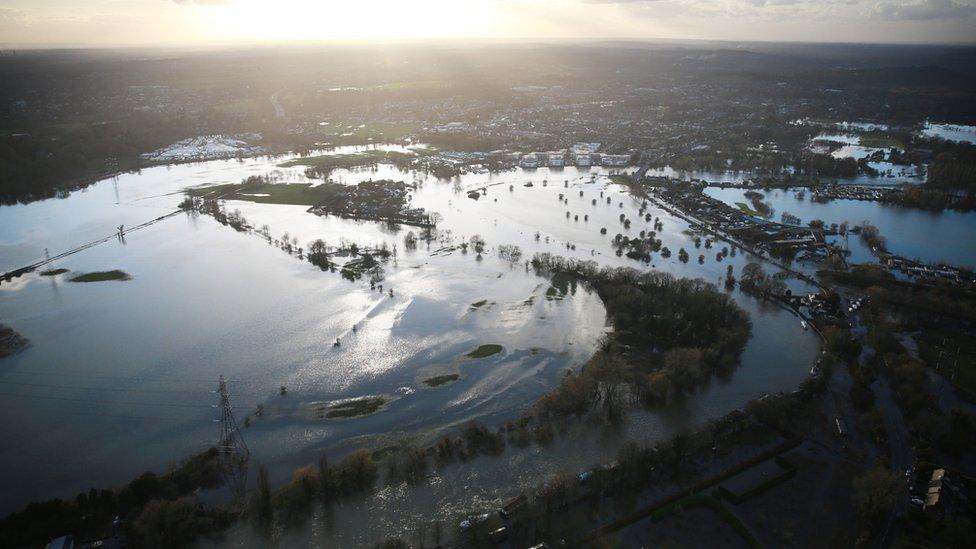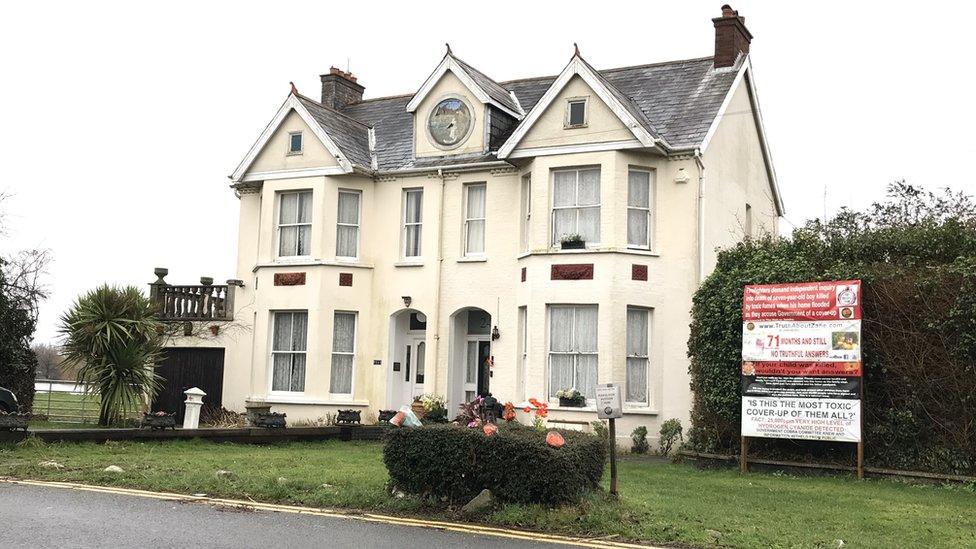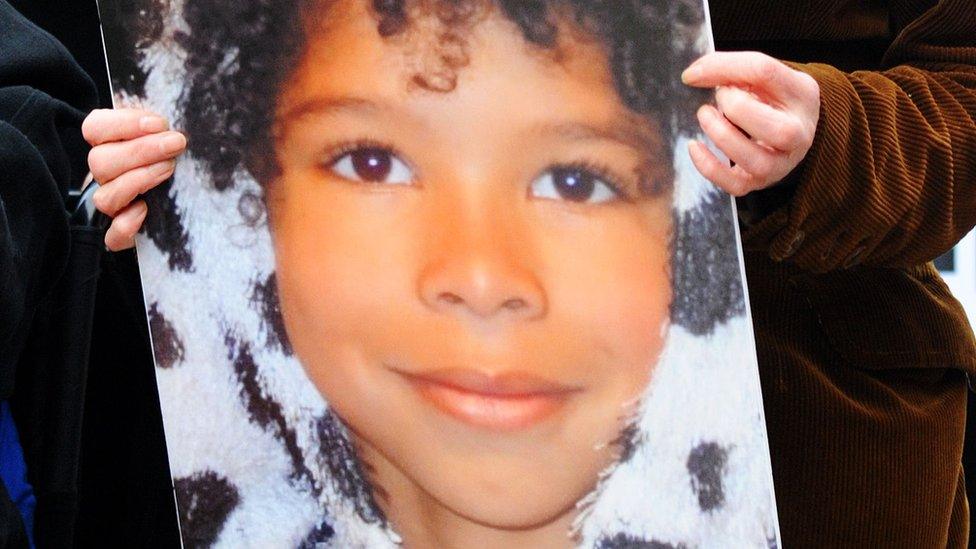Zane Gbangbola: Chemical waste poisoning claims 'backed'
- Published

Zane Gbangbola's parents say their son was killed by landfill gases
A couple who believe their son died as a result of chemical waste being dumped near their home say a document has come to light backing their claim.
An inquest ruled Zane Gbangbola died aged seven from carbon monoxide poisoning in 2014.
But his parents say he was poisoned by gases washed out of the land during floods in Chertsey, Surrey.
They say a planning document reveals a buried canister which gave off a noxious smell was found nearby in 1972.
Kye Gbangbola and Nicole Lawler said this tallied with information that had already emerged about the alleged dumping of chemicals near their home.
Earlier this year, a former Ministry of Defence engineer made claims to the BBC that subcontractors working for a tank research facility dumped chemical waste in gravel pits around Chertsey, including behind the family's house.

Chertsey was hit by major floods in 2014
The whistleblower told the BBC the chemicals would have been put into drums that rusted and corroded over the years, allowing chemicals to leach into the ground.
Because the BBC agreed to protect his identity it was unable to verify the claims.
The latest information was revealed in planning documents, external submitted by Esso for an aviation fuel pipeline from Southampton to London.
The documents described how boreholes were drilled into the Lavenders landfill site in 1972 but in one borehole the drilling "appeared to strike a metal canister... which released a substance that effervesced with water in the borehole and gave rise to an 'obnoxious smell'."

Zane's parents have made fresh calls for the land to be independently tested
Zane's parents said the 1972 incident supported their version of events and have made fresh calls for independent tests.
They have been backed by environmental consultant Paul Mobbs who said, until regulations changed in the 1990s, drums of waste would be buried alongside other landfill.
He said: "There could be drums of anything in there.
"Today, landfill is all managed and they have got an exact map. The tipping plan for Lavenders is quite literally a line on a map."
He backed the couple's concerns and their calls for independent testing of the land, adding: "We won't know what's in there until they go around and drill holes and test it."
After Zane died during floods in 2014, his death was attributed by a coroner to carbon monoxide poisoning from a petrol-powered pump used by the couple to clear floodwater, but which they insist was not in use.
They said floods forced hydrogen cyanide out of the land, which killed Zane and left his father paralysed.
Ms Lawler said: "Disturbing the ground puts residents at risk as well as workers. Kye and I do not want anyone else to grieve a death or suffer life-changing injury."
She said: "The land should be independently tested."
Related topics
- Published24 February 2020

- Published12 February 2020

- Published11 October 2019
